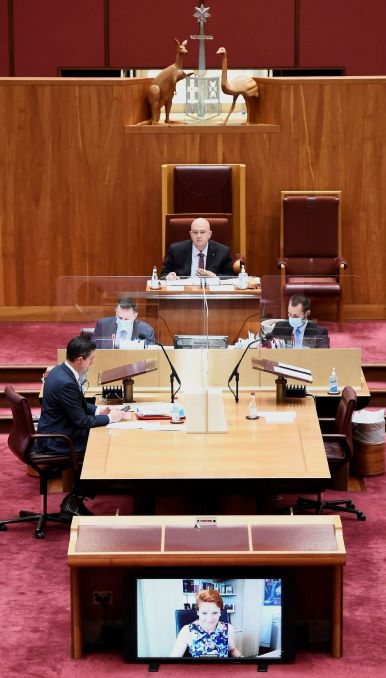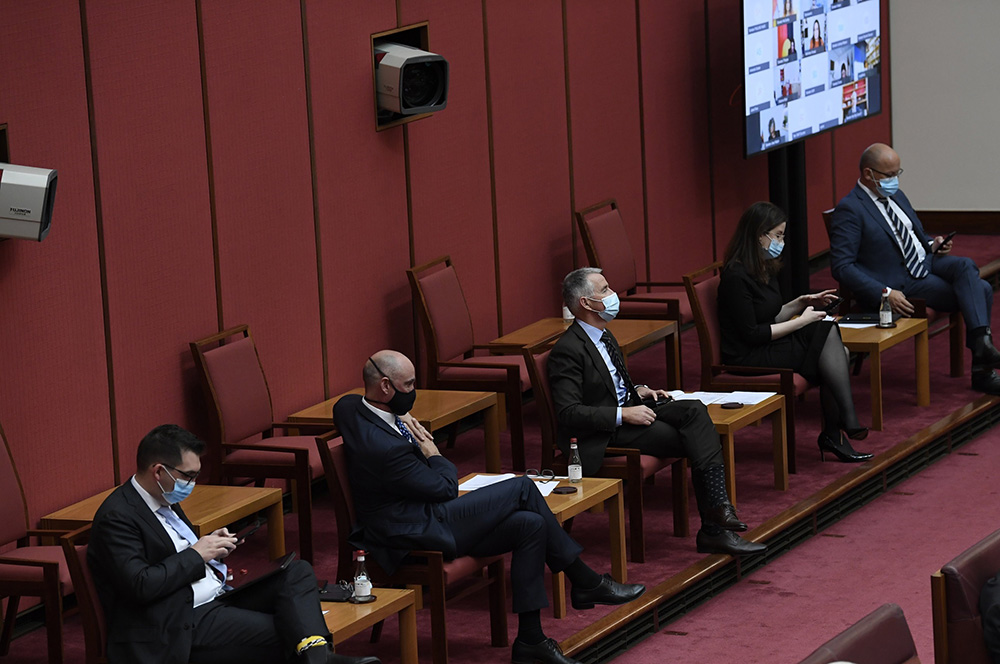03/12/2021
When the Senate sat on 2 December for the last time in 2021, it marked off a remarkable two years for the Parliament.

Senator Hanson participating in Senate proceedings via video link (Photo: AUSPIC)
The COVID pandemic created a unique challenge for the Senate which is required to meet and consider bills (proposed laws), scrutinise government expenditure, and represent the needs and interests of constituents. The challenge was to find ways to keep the Parliament running while keeping parliamentarians and staff safe.
A key part of this challenge was finding a way for senators to participate in Senate proceedings when prevented from physically attending the Senate because of travel restrictions, quarantine requirements or personal health advice.
The Senate responded to this challenge by adopting rules recommended by the Procedure Committee in August 2020 to allow senators to participate in Senate proceedings via video or audio link for the first time in its history.
These rules allow senators when appearing remotely to contribute to debate and propose amendments to bills during committee of the whole when the Senate considers bills in detail. (See Guides to Senate Procedure No. 16 – Consideration of legislation). However, senators participating remotely cannot vote, move motions or count towards quorum (the minimum number of senators required in the chamber to allow the Senate to meet).
Like many workplaces around the country, the Senate also had to make changes to its operation and work practices to provide for COVID-safe sittings. This meant making temporary changes to long-standing rules and conventions, including:

Senators sitting in temporary seating around the chamber to allow for social distancing (Photo: AUSPIC)
- senators being able to speak from seats other than their own and the provision of temporary seating to allow senators to be more spread out in the chamber;
- senators standing in the chamber to have their vote counted rather than being required to sit; and
- the doors into the Senate remaining open during the whole day and not being closed or locked during a vote.
Other COVID-safe arrangements put in place at Parliament House have included the mandatory use of face masks in the building and the closure of Parliament House to members of the public during sitting weeks.
Some of the practical measures adopted for sittings during COVID-19, such as greater reliance on the digital handling of documents, may remain in place long after the pandemic.
For more information on measures introduced throughout the COVID-19 pandemic see: